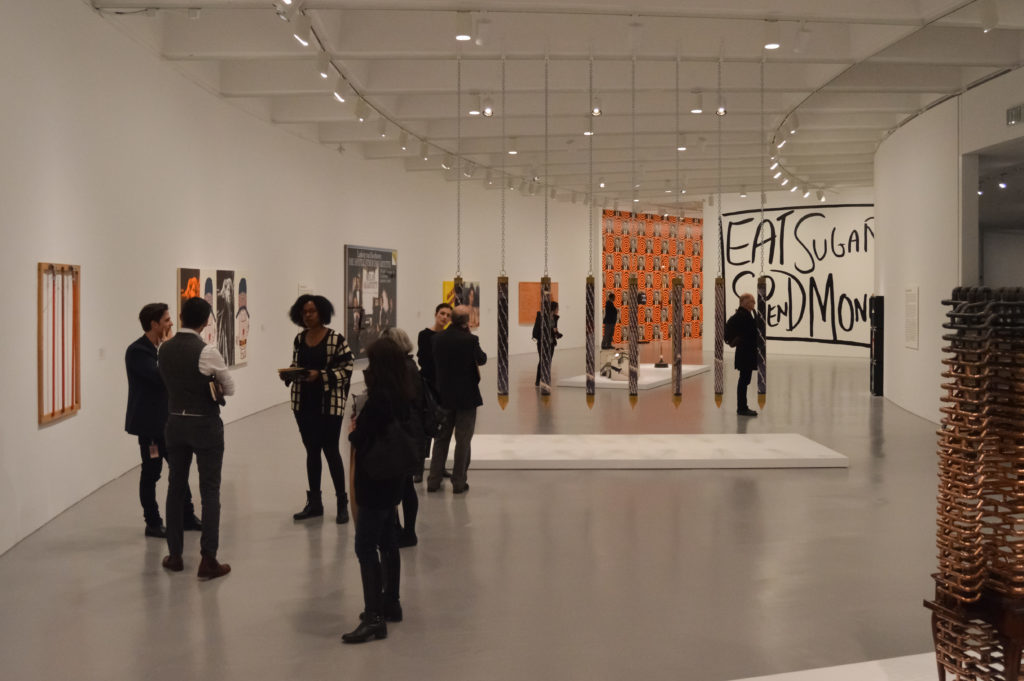A new exhibit at the Hirshhorn Museum and Sculpture Garden is taking visitors back to an iconic decade for art – the 1980s.
“Brand New: Art and Commodity in the 1980s” features nearly 150 works by more than 60 artists, like Andy Warhol, Barbara Kruger and Jeff Koons, varying from paintings and prints to 3-D installations, some of which are displayed for the first time in 30 years. The exhibit opened Wednesday and will close in mid-May.
Pop art and bright colors are seen throughout the exhibit to exemplify how many New York City-based artists used commerce and commercialism to change the tune of art in the 1980s by moving away from traditional approaches.
The title references the way artists of the 1980s redefined art by using commercial imagery, like ads from Smirnoff Vodka and Ajax cleaner. In this time period, there was a new marketing strategy of branding, which was also used by artists to market their work by creating their own “brand” and redefining art as a commodity.
Gianni Jetzer, the Hirshhorn’s curator-at-large, said she wanted to explore the relationship between commercial aspects and art that were connected in this time period.
He said repurposing material objects by adding messages onto them in order to reinvent them is what was truly “brand new” in the 1980s.
The artwork is displayed in chronological order, beginning in 1979 with the emergence of the counterculture in New York and illustrates the change in New York’s art scene through 1989.
Melissa Chiu, the museum’s director, considers the exhibit to be a contribution to art history by exploring a period in art history that was previously focused on the Neo-Expressionist art movement. Chiu said another motivation behind creating the exhibit was to show how the time period influenced contemporary art.
“In some ways the genesis of where we find ourselves today can be found in the 1980s,” Chiu said.
The exhibit also explores the political and social issues of the decade, including the AIDS crisis and the Cold War.
Artist Donald Moffett’s piece “He Kills Me,” displays alternating images of former President Ronald Reagan and hypnotic spirals behind a TV screen that shows a video of people, while the title “People with AIDS” is displayed.
Odes to art history are also spread through the exhibit with pieces like Gretchen Bender’s “The Pleasure is Back” series, which combines reproductions of Neo-Expressionist art with popular ads.
Artist Ashley Bickerton’s “Tormented Self-Portrait (Susie at Arles) No. 2” embodies the creator through various logos and was inspired by Van Gogh’s self portraits.
In addition to allowing visitors to leisurely wade through the exhibit, the museum will host various tours and talks to further explain the works.
Artists featured in the show will speak about their work March 29 at 7 p.m, and a tour by one of the artists, Peter Nagy, will take place April 27 at 12:30 p.m.
Through Thursday, the Hirshhorn will also project a giant version of a work by Krzysztof Wodiczko that displays a set of hands with candles in one and a gun in the other to kick off the exhibit opening.




